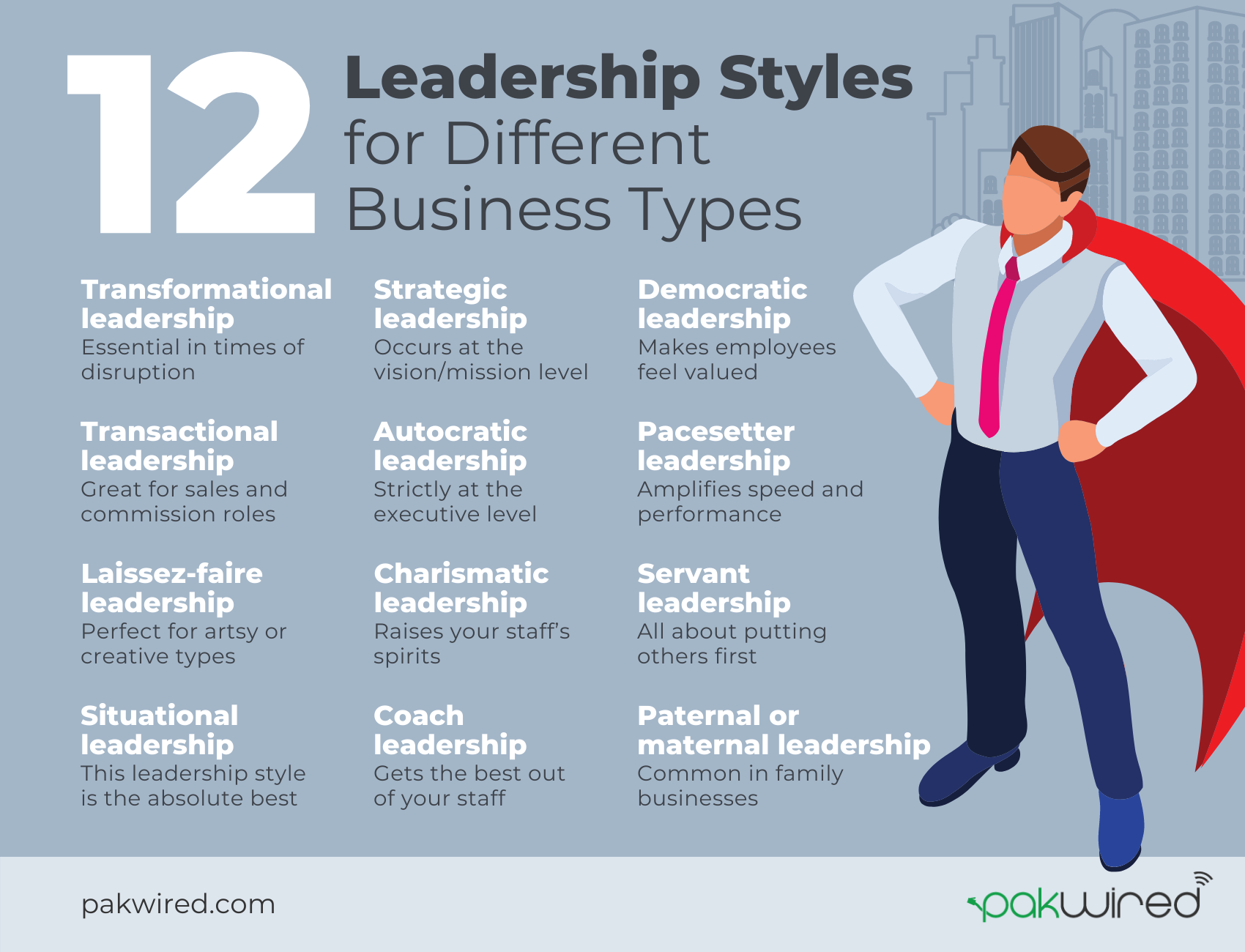If you’ve ever wondered, “What are the different leadership styles?” then you’re in the right place! Leadership is a fascinating and complex topic, with various approaches and styles that can make or break a team or organization. In this article, we’ll delve into the world of leadership and explore the different styles that leaders employ to achieve their goals and inspire their teams. So, grab a cup of coffee and get ready to dive into the exciting world of leadership!
When it comes to leadership, there is no one-size-fits-all approach. Different leaders have different styles, each with its own strengths and weaknesses. From the charismatic and visionary leaders who inspire others with their passion and grand ideas, to the democratic leaders who involve their team members in decision-making, and the autocratic leaders who take charge and make decisions on their own, there are a plethora of leadership styles to explore. So, whether you’re a budding leader looking to find your own style or just curious about the different approaches to leadership, this article will provide you with a comprehensive overview of the various leadership styles out there. Let’s get started!

# Different Leadership Styles: A Comprehensive Guide
Leadership is a key aspect of any organization or team. It is the ability to guide and inspire others towards a common goal. However, not all leaders adopt the same approach when it comes to leading their teams. Different leadership styles have emerged over the years, each with its own set of characteristics and benefits. In this article, we will explore the various leadership styles and how they can impact a team’s performance and overall success.
## Autocratic Leadership
Autocratic leadership is characterized by a leader who holds all the power and makes decisions without consulting their team members. This leadership style is often associated with a hierarchical organizational structure, where the leader’s authority is unquestioned. While this approach may seem authoritarian, it can be effective in certain situations, such as in times of crisis or when quick decisions need to be made.
One of the benefits of autocratic leadership is that it allows for swift decision-making and clear direction. In situations where there is a lack of time or expertise, the leader can rely on their own judgment to guide the team. However, this style can also lead to a lack of employee engagement and creativity, as team members may feel disempowered and undervalued.
## Democratic Leadership
Democratic leadership, also known as participative leadership, involves the leader involving their team members in the decision-making process. This style encourages collaboration and empowers individuals to contribute their ideas and opinions. By fostering a sense of ownership and involvement, democratic leaders can create a more engaged and motivated team.
One of the key benefits of democratic leadership is that it encourages innovation and creativity. When team members have a say in the decision-making process, they are more likely to feel invested in the outcomes and contribute their best ideas. However, this style may not be suitable for all situations, as it can be time-consuming and may be less effective in times of urgency or when quick decisions need to be made.
## Laissez-Faire Leadership
Laissez-faire leadership, also known as hands-off leadership, involves the leader taking a more passive role and allowing their team members to make decisions and manage their own tasks. This leadership style is based on the belief that individuals are capable of self-direction and can excel when given the freedom to do so. It is often employed in creative and highly skilled teams.
One of the benefits of laissez-faire leadership is that it allows for individual autonomy and encourages personal growth and development. Team members have the freedom to explore their own ideas and approaches, which can lead to innovation and increased job satisfaction. However, this style can also lead to a lack of direction and accountability if team members are not self-motivated or lack clear goals.
## Transformational Leadership
Transformational leadership is a style that focuses on inspiring and motivating team members to achieve their full potential. Leaders who adopt this style often have a strong vision and are able to communicate it effectively to their team. They inspire trust and confidence, and encourage their team members to go above and beyond their expected roles.
One of the key benefits of transformational leadership is that it can create a positive and engaging work environment. By empowering and motivating their team members, transformational leaders can foster a sense of purpose and commitment. This style is particularly effective in situations where a team needs to undergo significant change or when there is a need for innovation and creativity.
## Situational Leadership
Situational leadership is a flexible leadership style that adapts to the needs of the team and the situation at hand. Leaders who adopt this style are able to assess the abilities and readiness of their team members and adjust their leadership approach accordingly. This style recognizes that different individuals may require different levels of support and direction.
One of the benefits of situational leadership is that it allows leaders to tailor their approach to the specific needs of their team members. This can lead to increased engagement and productivity, as team members feel supported and understood. However, this style requires strong communication and adaptability on the part of the leader, as they need to be able to accurately assess the needs of their team members.
In conclusion, leadership styles play a crucial role in shaping the dynamics and success of a team. Each style has its own strengths and weaknesses, and the most effective leaders are able to adapt their approach based on the needs of their team and the situation at hand. By understanding the different leadership styles and their impact, leaders can better navigate the challenges and opportunities that arise within their organizations. So, whether you are an aspiring leader or a seasoned professional, it is important to continuously develop your leadership skills and explore different styles to become an effective and impactful leader.
Key Takeaways: What Are the Different Leadership Styles?
- Leadership styles vary depending on the individual’s approach and characteristics.
- Autocratic leadership involves making decisions without consulting others.
- Democratic leadership encourages participation and collaboration among team members.
- Transformational leadership inspires and motivates followers to achieve their full potential.
- Servant leadership focuses on serving the needs of others and prioritizing their well-being.
Frequently Asked Questions
Q: What is the autocratic leadership style?
The autocratic leadership style is characterized by a leader who has complete control and authority over decision-making. In this style, the leader makes decisions without seeking input or feedback from others. They have a clear vision and expect their team to follow their instructions without question. This style can be effective in situations where quick decisions need to be made or when there is a need for strong direction.
However, the autocratic leadership style can also create a lack of motivation and engagement among team members, as they may feel disempowered and undervalued. It is important for leaders using this style to communicate their expectations clearly and provide opportunities for team members to contribute their ideas and feedback.
Q: What is the democratic leadership style?
The democratic leadership style is characterized by a leader who encourages participation and collaboration from team members. In this style, the leader values and seeks input from their team when making decisions. They believe in shared decision-making and aim to create a supportive and inclusive work environment.
This leadership style can foster creativity, innovation, and a sense of ownership among team members. It promotes open communication and allows for diverse perspectives to be considered. However, the democratic leadership style may not be effective in situations that require quick decision-making or when there is a need for strong guidance.
Q: What is the transformational leadership style?
The transformational leadership style is characterized by a leader who inspires and motivates their team to achieve their full potential. They focus on developing and empowering their team members, encouraging growth and personal development. Transformational leaders often have a strong vision and are able to communicate it effectively to their team.
This leadership style can create a positive and engaging work environment, where individuals feel supported and valued. Transformational leaders are often seen as role models and can have a significant impact on the overall performance and success of their team. However, this style may require a high level of emotional intelligence and the ability to adapt to different situations.
Q: What is the laissez-faire leadership style?
The laissez-faire leadership style is characterized by a leader who takes a hands-off approach and allows their team members to have a high level of autonomy and freedom in decision-making. They trust their team to take responsibility for their work and provide minimal guidance or direction.
This leadership style can be effective in situations where team members are highly skilled and self-motivated. It fosters independence and creativity, allowing individuals to take ownership of their work. However, the laissez-faire leadership style may lead to a lack of structure and direction, which can result in confusion and inefficiency.
Q: What is the servant leadership style?
The servant leadership style is characterized by a leader who prioritizes the needs of their team members and focuses on serving them. They aim to support and empower their team, helping them to succeed and grow. Servant leaders are often compassionate, empathetic, and committed to the well-being of their team.
This leadership style can create a positive and trusting work environment, where individuals feel valued and supported. Servant leaders often foster collaboration and encourage the development of their team members. However, this style may require leaders to balance their own needs with the needs of their team and may not be suitable for all situations.

Final Thoughts
Now that we’ve explored the different leadership styles, it’s clear that there is no one-size-fits-all approach to leadership. Each style brings its own strengths and weaknesses, and understanding them can help us become more effective leaders ourselves. From the authoritative leader who sets a clear vision and direction, to the democratic leader who values collaboration and inclusivity, there are various ways to inspire and motivate a team.
One important thing to remember is that leadership styles are not set in stone. Great leaders are adaptable and know when to adjust their approach based on the situation and the needs of their team. It’s also worth noting that effective leadership is not solely about the style, but also about the qualities and skills a leader possesses. Communication, empathy, and the ability to inspire others are just a few of the traits that can make a leader successful.
In conclusion, leadership is a complex and dynamic concept, and there is no single “right” way to lead. By understanding the different leadership styles and their underlying principles, we can develop our own unique approach to leadership that aligns with our values and goals. Whether you’re leading a team in the workplace or taking on a leadership role in your personal life, remember that leadership is not just about the title, but about the impact you have on others and the positive change you can bring. So, embrace your own style, continue to learn and grow, and become the leader you aspire to be.